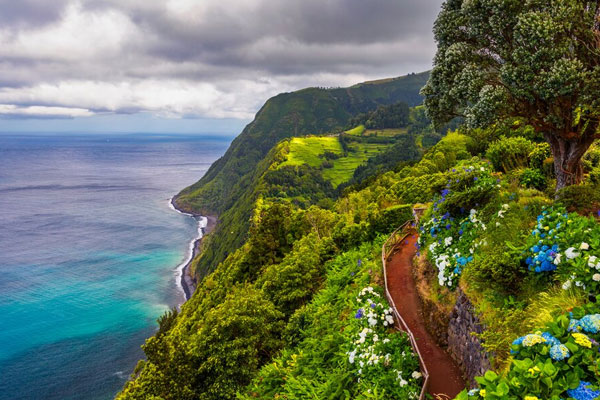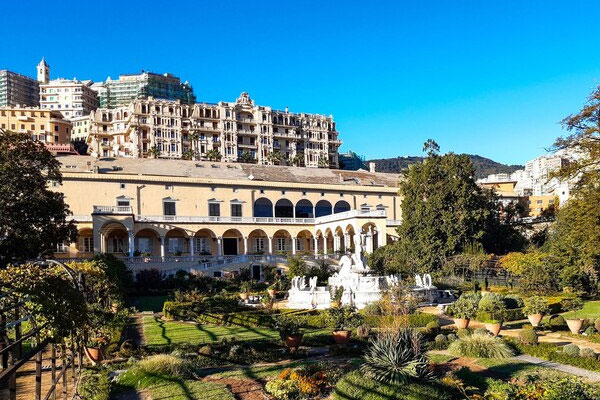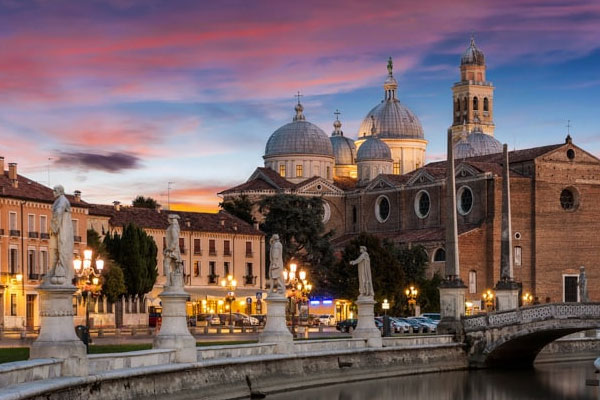Travel
The Most Dangerous Islands in the World

The Most Dangerous Islands in the World
Do you know The Most Dangerous Islands in the World?
Our planet boasts countless paradises adorned with lush greenery and inviting beaches. Yet, amidst these breathtaking destinations lie islands that, for various reasons, are best excluded from the list of must-see places.
In this exploration, we’ll embark on a journey to discover the top 10 most dangerous islands in the world, uncovering the perilous elements that make them unique.
Bikini Atoll, Marshall Islands:
Nestled in the Marshall Islands, Bikini Atoll earns its reputation as one of the most dangerous islands for two distinct reasons: a significant population of sharks, earning it the moniker “Shark Islands,” and residual radiation. From 1946 to 1958, the atoll witnessed numerous nuclear weapons tests, rendering it nearly uninhabitable.
Despite attempts at resettlement, radiation levels persisted, serving as a stark reminder of its perilous past.
Ramree, Burma:
Off the coast of Myanmar lies Ramree Island, infamous for its vast population of bloodthirsty saltwater crocodiles. Its claim to notoriety stems from a macabre event during World War II when around a thousand Japanese soldiers, fleeing the British army, encountered the island’s swamps, resulting in the Guinness World Record for the most massive crocodile attack on humans.
Saba, Caribbean:
While Saba in the Caribbean may appear idyllic in pictures, its leeward side harbors treacherous winds, earning it a spot among the most dangerous islands. These destructive winds wreak havoc, leaving behind a barren landscape of cacti and dried bushes. Saba’s airport, featured in another top 10 list, stands as a local landmark despite the island’s perilous reputation.
Tuvalu Islands, Polynesia:
Tuvalu, located in Polynesia, faces a unique threat – periodic sea level rise. With its highest point just 4.6 meters above water, the island experiences submersion, causing significant distress to the local population, primarily fishermen.
Gruinard, Scotland:
Gruinard Island in Scotland served as a testing ground for biological weapons during World War II. Experimenting with anthrax bacteria led to the island’s quarantine. Despite extensive decontamination efforts in 1986, Gruinard remains listed among the most dangerous places, showcasing the lasting impact of wartime experiments.
Renaissance Island in the (former) Aral Sea:
Comrade Stalin’s dark humor led to the creation of Renaissance Island as the world’s largest nuclear weapons test site in the former Aral Sea. The island hosted experiments on prisoners involving anthrax, bubonic plague, smallpox, tularemia, and other bacteria, leading to pathologies and genetic mutations among the local population.
Miyakejima, Japan:
Miyakejima, Japan, is home to the active Oyama volcano, which releases poisonous gas periodically. Inhabitants, often seen wearing gas masks, face the looming threat of toxic emissions, turning the island into an eerie landscape resembling scenes from a post-apocalyptic movie.
Queimada Grande, Brazil:
Off the coast of São Paulo, Queimada Grande is a tiny island inhabited by one of the world’s most venomous snakes, the Golden Spearhead. With approximately one snake per square meter, the island earned the nickname Zmeiny. The Brazilian government eventually banned excursions due to the excessive danger, leaving only a solitary beacon keeper as the island’s resident.
Farallon Islands near USA:
The Farallon Islands, off the coast of San Francisco, served as a radioactive waste dump between 1946 and 1970. Vague information surrounds the contents of the 47.5 thousand steel barrels in the vicinity, with radiation levels surpassing those of Chernobyl. The presence of a significant white shark population further compounds the potential risks.
Poveglia, Venice:
Nestled near Venice, Poveglia Island has a sinister history as a plague quarantine destination during the Roman Empire and the Renaissance. Serving as a massive crematorium, it witnessed the burning of both corpses and barely alive individuals, earning it a reputation as a place from which there is no return.
Conclusion:
These dangerous islands serve as cautionary tales, reminding us of the delicate balance between human activities and the fragility of our ecosystems. While some islands grapple with the aftermath of nuclear testing, biological experiments, or natural perils, others bear the scars of environmental degradation. Navigating the dangers of these islands requires a deep understanding of their unique challenges and a commitment to responsible environmental stewardship.
Travel
What to do in Genoa – Travel To Genoa

What to do in Genoa – Travel To Genoa
What to do in Genoa :
Genoa, often overshadowed by its more popular Italian counterparts, holds a wealth of treasures waiting to be discovered. While it may not immediately come to mind when planning an Italian adventure, this maritime city boasts a rich history as the former capital of a powerful republic and the birthplace of renowned figures like Christopher Columbus and Niccolo Paganini.
Despite its lesser-known status, it offers a unique charm and a plethora of attractions that appeal to curious travelers. So, what makes this city special, and what should you do when you visit?
Getting to Genoa
Reaching Genoa is easier than you might think. During the summer months, S7 Airlines offers direct flights, while various European carriers operate year-round flights. Alternatively, you can fly to Milan and take a short train ride to Genoa, which is only about an hour and a half away. Train travel is also an option, with direct routes available from cities like Moscow. Whether you choose to fly or take the train, Genoa is well-connected and easily accessible.
Where to Stay in Genoa
Choosing accommodation in Genoa requires some consideration, especially due to the city’s intricate layout. The historical center may seem compact, but its labyrinthine streets can be confusing to navigate, particularly with luggage. Opting for hotels near major transportation hubs like Principe and Bignoli train stations or metro stations is advisable.
For first-time visitors staying briefly, accommodations near Genova Piazza Principe offer convenience and easy access to transportation links, including the airport bus stop and cruise terminal. From luxurious hotels like the Grand Hotel Savoia to budget-friendly options such as Hotel Chopin, there’s something to suit every preference and budget.
Getting Around Genoa
Exploring Italy on foot is the best way to immerse yourself in its unique atmosphere. While the city’s narrow medieval streets may pose navigational challenges, they offer an authentic glimpse into its history and character. However, public transportation is essential for covering longer distances or navigating the city’s verticality.
Genoa boasts a metro system, buses, funiculars, and elevators integrated into the transportation network. Consider purchasing a 24-hour Genova Pass for unlimited access to public transport, excluding airport shuttles.
What to See in Genoa
Contrary to popular belief, Genoa is brimming with attractions awaiting discovery. From opulent palaces and picturesque gardens to ancient churches and world-class museums, the city offers something for every traveler. Key highlights include Ferrari Square, a grandiose civic space; the Cathedral of St. Lawrence, guarded by stone lions; and the Palazzi dei Rolli, a collection of historic palaces showcasing Genoa’s architectural splendor.
Additionally, numerous churches, including the Church of St. Peter’s and the Church of St. John, offer cultural and architectural delights. Don’t miss iconic landmarks like Villa del Principe, Lanterna lighthouse, and the medieval gate of Porta Soprano, each adding to Genoa’s allure.
Day Trips from Genoa
While Genoa itself warrants exploration, it also serves as an ideal base for day trips to nearby destinations. Along the Ligurian coast, picturesque towns like the Cinque Terre National Park, Portofino, Rapallo, and Camogli beckon with their scenic beauty and charm. Venture westward to discover hidden gems such as Noli, Finale Ligure, and Albenga, each offering its own unique allure.
Beyond the coast, explore the caves of Toirano or visit the historic town of Campo Ligure, known for its medieval castle. With so much to see and do in the surrounding area, Genoa provides an excellent starting point for exploring Liguria’s diverse attractions.
Conclusion
Genoa may not be as widely recognized as other Italian cities, but its cultural heritage, architectural marvels, and coastal beauty make it a destination worth exploring. Whether you’re strolling through its labyrinthine streets, admiring historic palaces, or embarking on day trips along the Ligurian coast, Genoa captivates visitors with its rich history and vibrant atmosphere. So, why not uncover the hidden treasures of this underrated gem on your next Italian adventure?
Travel
Things to do in Rimini Italy

Things to do in Rimini Italy
Do you know the most important Things to do in Rimini Italy? Let’s take a look
Rimini is renowned as a beach resort destination, drawing visitors from Italy and beyond with its long history of seaside hospitality. However, beyond its sandy shores lies a city steeped in ancient heritage and cultural charm, offering a wealth of attractions for travelers to discover. In this comprehensive guide, we’ll delve into everything you need to know to plan an unforgettable trip to Rimini.
Getting to Rimini
Rimini is accessible by air, land, and sea, making it convenient to reach from various parts of Italy and Europe. The city has its own international airport, Federico Fellini Airport, serving both domestic and international flights. Additionally, Rimini is well-connected by train, with direct rail links to major cities like Bologna and Ancona. For those arriving by car, highways provide easy access to Rimini from neighboring regions.
Where to Stay in Rimini
With its status as a popular resort destination, Rimini offers a wide range of accommodation options to suit every traveler’s needs and preferences. The Marina Centro area, situated in the heart of the resort district, is ideal for beachgoers seeking convenience and proximity to amenities.
Here, hotels like Erbavoglio and De Londres offer comfortable accommodations within walking distance of the beach. Alternatively, for those looking to explore the city’s historic center, hotels in the Old Town area provide easy access to landmarks like the Tempio Malatestiano and Ponte di Tiberio.
Getting Around Rimini
Navigating Rimini is relatively straightforward, with most attractions located within easy reach of the city center. Visitors staying in Marina Centro can explore the resort area on foot, while those venturing further afield can make use of public transportation options like buses and trains. Rimini’s efficient public transit system provides convenient access to key sites, including the Old Town and surrounding areas.
What to See in Rimini
Rimini boasts a rich cultural heritage, with a variety of historical and architectural landmarks waiting to be explored. In the city’s historic center, visitors can admire the impressive Tempio Malatestiano, a medieval temple converted into a cathedral, and stroll across the ancient Ponte di Tiberio, a Roman bridge dating back to the 1st century AD. For a glimpse into Italy’s cinematic history, Parco Federico Fellini offers a tribute to the renowned filmmaker with statues and exhibits celebrating his life and work.
In addition to its historical attractions, Rimini is home to modern marvels like Italia in Miniatura, a theme park featuring miniature replicas of famous Italian landmarks. Perfect for families and visitors of all ages, this unique attraction offers a fun and educational experience that showcases the country’s cultural heritage on a smaller scale.
Day Trips from Rimini
While Rimini itself offers plenty to see and do, its strategic location makes it an ideal base for exploring the surrounding region. Nearby destinations like San Marino, Santarcangelo di Romagna, and Gradara are easily accessible by car or public transportation, offering charming villages, historic sites, and picturesque landscapes to discover.
For those seeking a taste of urban culture, cities like Bologna, Ravenna, and Ancona are just a short train ride away, providing opportunities to explore their rich history, vibrant arts scene, and culinary delights.
Conclusion
From its sun-drenched beaches to its ancient landmarks and modern attractions, Rimini offers a diverse array of experiences for travelers to enjoy. Whether you’re soaking up the sun along the Adriatic coast, exploring the city’s historic center, or embarking on day trips to nearby destinations, Rimini promises a memorable and rewarding travel experience for visitors of all interests and ages.
Travel
Where to Stay in Trento Italy

Where to Stay in Trento Italy
Where to Stay in Trento, Italy :
Trento, nestled in a valley at the base of the Alps, is a city worth exploring! With its picturesque surroundings and proximity to other charming towns and attractions, Trento offers something for every traveler. Whether you plan to wander through the city streets, venture into the nearby mountains, or use Trento as a launching pad for further adventures, there’s plenty to see and do here.
Which area of Trento is best for accommodation?
Trento is relatively straightforward to navigate, with the historical city center separated from the train and bus stations by a large square. Near the station, you’ll find a tourist information kiosk where you can pick up a map of the city, or visit a nearby travel agency for assistance.
Trento offers city-wide wireless internet access, although you may need to register in advance for login credentials. It’s worth noting that temperatures can vary significantly between the city and the mountains, so be sure to pack appropriate clothing and footwear for your adventures.
The area around the train station is relatively clean and quiet, making it a convenient option for those planning to explore the region using public transportation. Hotels near the station, such as the Grand Hotel Trento and Hotel America, offer comfortable accommodations at slightly lower prices compared to those in the city center. These hotels provide easy access to both the station and the historical center of Trento, which is just a short walk away.
Speaking of the city center, Trento’s historical district is relatively compact, making it easy to explore on foot. When choosing a hotel in this area, focus on factors such as cost and traveler reviews rather than proximity to specific attractions, as most hotels are within walking distance of the main sights.
Keep in mind that older buildings in the city center may lack amenities like elevators and spacious bathrooms, but they often offer charm and character in abundance.
Hotels such as Hotel Venezia and Hotel Aquila D’Oro offer comfortable accommodations in the heart of Trento’s city center. While some rooms may offer views of the city or nearby landmarks, be prepared for the possibility of street noise, especially in the mornings. Alternatively, Albergo Accademia provides spacious designer rooms with amenities like jacuzzis, although guests may prefer rooms facing the quieter courtyard.
For those seeking a more independent accommodation option, apartments can be a great choice. Borgo Rossi Apartments, located near Piazza Venezia, offer kitchenettes and dining areas, allowing guests to prepare their meals and experience local cuisine firsthand. Be sure to communicate with the apartment owners or managers ahead of time to clarify details like heating and air conditioning availability, parking options, and key pickup procedures.
Conclusion
In conclusion, Trento offers a range of accommodation options to suit every traveler’s needs and preferences. Whether you choose to stay near the train station for convenience or in the heart of the city center for easy access to attractions, you’re sure to enjoy your time exploring this charming Italian city.
-

 Travel9 months ago
Travel9 months agoBest Spinning Rod for Bass 2024
-

 Technology9 months ago
Technology9 months agoBest Lure for Trout 2024
-

 Travel9 months ago
Travel9 months agoBest Hunting and Fishing Clothing 2024
-

 Travel9 months ago
Travel9 months agoBest Robot Vacuum Cleaners 2024
-

 Technology9 months ago
Technology9 months agoBest Floats for Night Fishing
-

 News6 months ago
News6 months agoValentine’s Deals
-

 Technology9 months ago
Technology9 months agoBest Twisters for Fishing 2024
-

 Travel9 months ago
Travel9 months agoBest Spinning Fishing Reels for Bass 2024



















